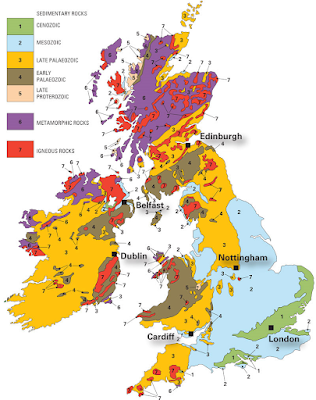How accessible is Palaeontology?
In the 19th century, when Palaeontology began to become its own specific field, if you were not a rich white man from the south of England, you pretty much had no chance of getting involved in these new curiosities. Museums, universities, and conferences were built almost exclusively for this certain demographic, and this was the case for most academia at the time. Things are different now, of course, but just how accessible is Palaeontology in the UK in 2023? I'm not just talking about pursuing it as a profession, but also the opportunities for informal and formal education, be it through museums, conferences, journals, and volunteering.
Since starting a job at a museum this year, I have taken on a better understanding of how the general public perceives Palaeontology, and how it has been presented in the media. Many people believe that studying fossils is an unachievable career with some kind of secret path needed to get into. People seem surprised to hear that some of the most important fossil discoveries have been found and studied in the UK and that you don't need to embark on an Indiana Jones-esque expedition to find fossils in far away lands, with millions of people in the UK being less than an hours drive away from a fossil site. The UK in particular seems to have won the geological lottery, with rocks dating to all geological periods being found in the 78th largest country on earth. It is also easier than ever to find out where your nearest fossil site is. The UKfossils.com fossil collecting locations page shows every known site within the UK, sorted by area, making Palaeontology a much more accessible field to everyone in the UK.
Geological map of the UK and Ireland, showing which eras certain rock beds date to (BGS, 2020).
According to Wikipedia, there are 44 natural history museums in the UK with a fossil collection on display. Only 9 of these, however, are located outside of England and are particularly more concentrated around large cities in the south. This is evidently a hangover from the elitist past of natural sciences, a time in which many of these institutions were founded. Although there seems to be more institutions sprouting in certain areas, for someone who doesn't live near a big city, or outside of the capitals in Wales and Northern Ireland, sparking the wonder about the natural history of our planet by seeing real-life fossils may be just as unreachable as it was in the 19th century.
Like most sciences, the most common route into the profession is through university education. The demographics seen in different UK universities is a whole topic in itself, so I won't delve too much into that here. Pure palaeontology courses are not so common in the UK, with only four universities currently offering a palaeontology undergraduate course, two of which are Russell Group universities. A palaeontology degree, however, is not the only way to attain an education in the field at this level. Many people, myself included, attain an undergraduate degree in a related field, usually something related to biological or earth sciences. This makes palaeontology more accessible, as these courses are available at the majority of UK universities, with a range of entry requirements to get on to studying a course.
Outside of formal qualifications, volunteering is another way to get experience in palaeontology. I have found that these types of opportunities are not well advertised, so people who may be interested in them may not even be aware that they exist. Getting into these opportunities tends to require some sort of "inside knowledge", whether that be already being part of an institution or society, or having an acquaintance with a professional. These things aren't so easily attainable to most people and highlights an essential part of the road to becoming a professional that may be inaccessible to many. The majority of said opportunities are also unpaid, meaning that some people may have to take time off from their jobs, whilst needing the money for everyday living. There is also the situation of spending money on the necessary equipment for these experiences, such as boots, clothing, food, accommodation, and travel.
Despite these certain limitations that have yet to make much progress over time, this is a point in history in which Palaeontology is the most prevalent that it has ever been in popular media. It feels as if there is a new documentary, book or breakthrough discovery almost every week. Given the presence of social media, it is also easier than ever to talk to professionals for anyone who has an interest, and anyone can gain admission to online talks, conferences and courses that have been made available for free, on top of blogs, vlogs and online video content on youtube.
Overall, it seems that palaeontology, along with other science disciplines, has come a long way since the times of only being accessible to the rich men of Western society. There is clearly still a way to go, though, particularly when it comes to outreach from institutions and educational establishments, to rural and low-income areas.


Comments
Post a Comment